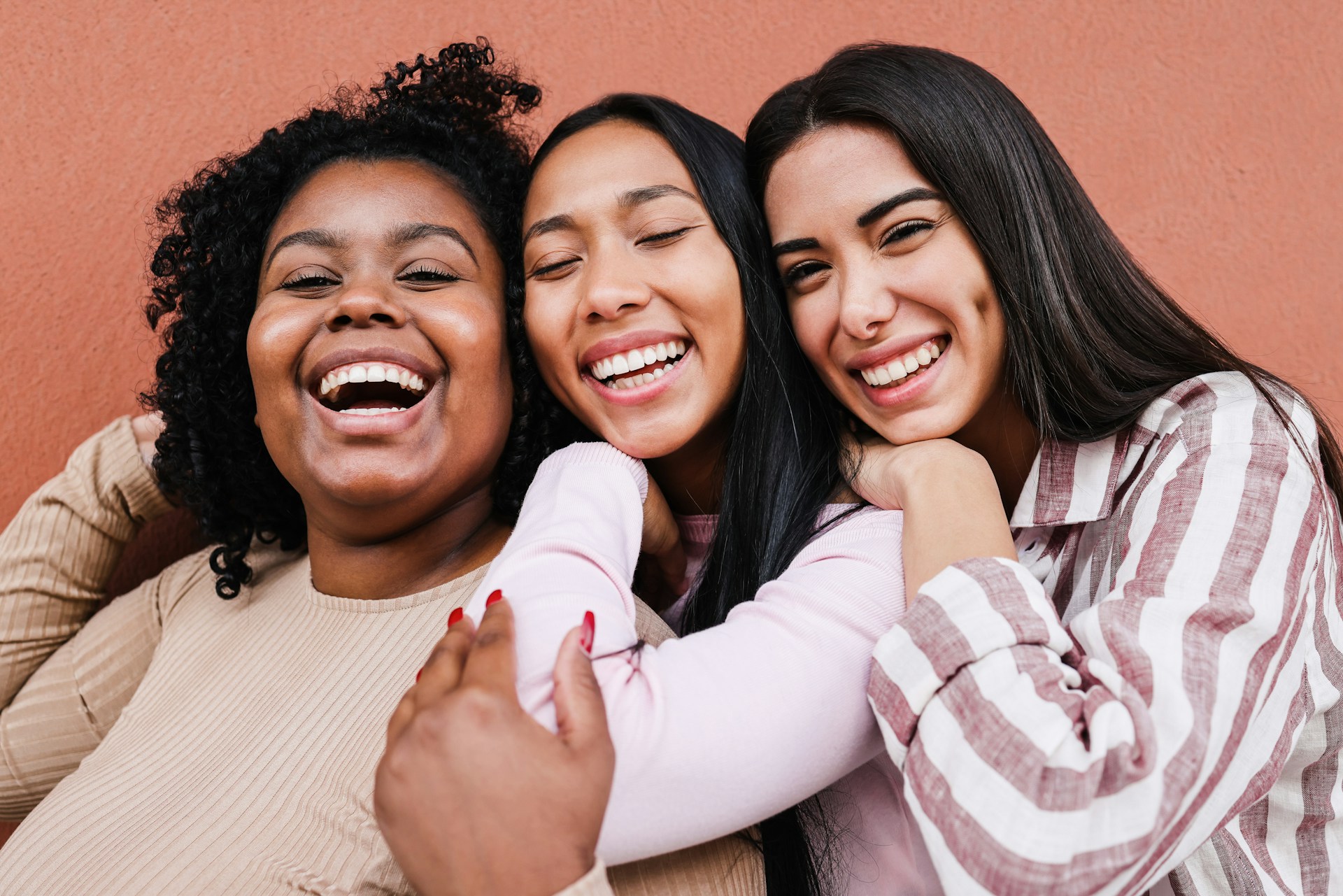Film
Taking “Frozen 2” Too Seriously: Race, Reparations, and Revisionist History
04 Dec, 19

Idina Menzel and Kristen Bell Receive Frozen-Inspired Dolls
Photo by Jordan Strauss-Invision-AP-Shutterstock
If you’ve seen Frozen, then you know that being a person of color these days is sort of like having magic powers—if you live in a society (like Arendelle) where people with magic powers are vilified and run out of many towns out of fear and misunderstanding of the foreign and unknown.
Frozen 2, released for streaming by Disney three months early to alleviate boredom from coronavirus quarantine, aims to amend Arendelle’s society by tossing together a sh*t ton of magic, indigenous people, and the lies white colonizers tell. In many ways, directors Chris Buck and Jennifer Lee gave postcolonial studies majors everywhere a dream come true with Frozen 2. Despite Frozen grossing $1.27 billion, it had a few problems, particularly with whitewashing its fictional depiction of Norwegian culture. Ahead of the sequel’s record-breaking release, word spread that the filmmakers signed a contract with the parliament of the indigenous Scandinavian Sámi community. This time, when they heavily borrowed elements of Sámi culture, they worked to “collaborate with the Sámi in an effort to ensure that the content of Frozen 2 is culturally sensitive, appropriate, and respectful of the Sámi and their culture.”
As a result, they leaned all the way in; the plot of Frozen 2 revolves around the awakening of the four elemental spirits that reside in the Enchanted Forest just beyond Arendelle. Long ago, a bloody conflict erupted between the Arendellians and the native people of the forest, the Northuldra, though no one knows who instigated the violence. The spirits were so enraged that they cut the forest off from the rest of the world, creating a mythical wilderness that Anna (Kristen Bell) and Elsa (Idina Menzel) were warned to avoid by their parents.
SPOILERS
But then Elsa has to go and belt out another solo on her balcony, the climax of which is accidentally awakening the four spirits, which attack Arendelle and drive everybody out of the kingdom. On the bright side, “Into the Unknown” is a ballin’ track that’s more lyrically interesting and edgier than “Let It Go”–it’s sort of Elsa’s version of being a Disney teen star trying to start a career in more mature mainstream pop music. The downside is that Frozen 2‘s runtime is 1 hour and 43 minutes, with a handful of convoluted sub-plots that include a weird Pocahontas send-up involving the former king and queen, the moral question of reparations for colonialism’s crimes, and it turns out that Elsa and Anna are mixed race.
For context, the core demographics of Disney’s princess movies are under 10 years old and barely have enough mass to hold down their theater seats. Reparations in a Disney film is a lot to throw at them.
For the record, I enjoyed Frozen 2 at least 175% more than the original, probably because the complexity and nuance of a postcolonial narrative work well for a viewer who wasted a year completing an Honors Thesis in postcolonial literature with respect to Korean-Americans’ cognitive dissonance with Korean history…But we try to protect our children these days, and that includes being shielded from Edward Said’s Orientalism until puberty. Inevitably, children will be forced to reckon with the father of postcolonial studies, anyway: “Always there lurks the assumption that although the Western consumer belongs to a numerical minority, he is entitled either to own or to expend (or both) the majority of the world’s resources. Why? Because he, unlike the Oriental, is a true human being.” Holy sh*it, that’s heavy for a nine-year-old! And yes, those are exactly the thematic stakes in Frozen 2.
The sequel managed to set the record for the highest-grossing film in Thanksgiving history because it’s Disney’s ideal woke version of colonization. The Enchanted Forest isn’t just the home of the native Northuldran people (whose manner of dress and features were designed to resemble the Sámi); it’s the scene of Arendelle’s own Thanksgiving horror story. Long ago, Anna and Elsa’s grandfather, King Runeard, made a peace offering to the Northuldran people by building an expansive dam to supposedly strengthen their rivers. In reality, he was weakening their forest so they would come to depend on Arendelle for resources (you know, like a colony). So while the Arendellians and Northuldrans are cavorting around the forest to celebrate their newfound unity, King Runeard murders the leader of the Northuldran people and sort of begins a genocide. And it’s all because of a dam; as Inkoo Kang at Slate says, “Uh oh. Dams are almost always a bad sign in movies.”
There’s also a lot of rote talk about how “water has memory”; there’s a hitherto undiscovered “fifth spirit” that unites all the other elements (thereby bridging the distance between magic and humans, because…reasons?!); and, oh yeah, Elsa and Anna’s mother was actually 100% Northuldran. She saved their father’s life at the Thanksgiving bloodbath and later married him, leaving behind her family and her home to join his shiny new world… That’s Pocahontas. That’s a straight-up riff on Disney’s whitewashed, “noble savage” myth of Pocahontas.
As Edward Said wrote, “[A] white middle-class Westerner believes it his human prerogative not only to manage the nonwhite world but also to own it, just because by definition ‘it’ is not quite as human as ‘we’ are.” So while Elsa and Anna are on a quest to save Arendelle from the four spirits (and also seek out the source of Elsa’s powers once and for all), there’s a moment when Elsa stands in the forest surrounded by the Northuldran people and vows with the full gravitas of Idina Menzel’s cavernous lungs to free the forest and its people. But don’t worry–it’s not a White Savior moment! Because now Elsa and Anna are half-Northuldran, which makes them coded as mixed-race people (and indigenous people, at that!), so they can’t be White Saviors, according to Disney. Just look at how Not White they are:
Okay, yes, they’re still among the whitest princesses to ever whitely save the day. But their heroic conviction to do “The Next Right Thing” (yes, that’s a musical number) means that the heaviest gravity of the entire film centers on their mission to rectify their grandfather’s betrayal—by destroying the dam. Doing so means destroying the city of Arendelle, imbuing this whole children’s movie with emotional and moral anxieties over how far one is willing to go to rectify injustices of the past. South African writer Caryn Welby-Solomon acknowledges that “Elsa and Anna were not part of their grandfather’s betrayal, but they are profiting off of it, and so it is up to them to right the wrongs.” While the slapdash solution is too rushed to reach its full potential, she says the “‘solution’ is beautifully depicted, with Anna sacrificing Arendelle in order to save the forest and set the people free. It’s a selfless act from the part of the oppressors that creates harmony between the two nations again.”
But overall, it’s just a “bizarre storyline,” as Kang at Slate describes. It’s mostly spooky—and plenty problematic—on multiple levels: “The idea that we should be willing to annihilate any and all current institutions (including the only home some people have known!) to correct historical atrocities sure is, uh, lofty. Framing reparations in this zero-sum way feels both simplistic and possibly counterproductive toward actual justice.”
If there’s a through-line to the Frozen franchise thus far, it’s about discovering all the truths that are hidden by oppressive powers that be. While Elsa is sadly not a queer icon (yet), she’s come a long way from the internalized shame of her father’s “conceal it, don’t feel it” bullsh*t and fears of being ostracized and rejected. Anna went from fighting against Elsa’s restrictive lock-down of the castle (by developing terrible taste in men, but fine, she was desperate for freedom) to sacrificing the only home she’s ever known for civil justice. Together, they seek to reverse the lies and revisionist history of their grandfather’s generation perpetuated in order to maintain Arendelle’s hegemonic control. Hell, all Olaf originally wanted was to experience summer, but the limitations of his frozen body stood in the way of his self-discovery until Elsa’s magic overcame the cruel, ephemeral nature of snow…

Am I taking Frozen 2 too seriously? You bet your frozen ass I am. Because, despite all its flaws, this movie goes further than most to introduce the discomfort of self-discovery to children. One of the (many) problems with Disney’s classic Happily Ever After trope is the erasure of marginalized people whose communities frankly haven’t seen many happy endings. For everybody, growing up is about uncovering the lost or misfit parts of yourself by sweeping back the lies and deceptions sowed by institutions of power, whether that’s society at large or your own family. But for young people of color, generational oppression just compounds the silence and shame already wrapped around the whole ridiculous business of coming-of-age.
What I’m saying is: If you come from Un-Happily Ever After people, then even a children’s movie addressing difficult questions about how to relate to fraught history can help prime you for the real discomfort of discovering how deeply histories of injustices have affected your community and your family. It doesn’t make it easier (it’s not magic, after all), but it reaffirms that you’re part of a larger context and a larger story.
- Frozen 2 | Official Trailer 2 – YouTube ›
- ‘Frozen 2’ gets more adult and more political with each viewing – Los … ›
- How “Frozen 2” is like “Watchmen” | Salon.com ›
- Frozen 2 is a ‘bizarre storyline’ about reparations ›
- Frozen 2 movie review: Elsa and Anna make a case for reparations … ›
- ‘Frozen 2’ Ices Out Box Office Competition With $127 Million … ›
- ‘Frozen II’ is All Spectacle, a Disappointing Sequel – SF Weekly ›
- The Radical Politics of Disney’s Frozen II | National Review ›
- My Kids Loved ‘Frozen 2,’ But This Parent Is Deeply Confused | Vogue ›
- Frozen II only echoes the magic of the original ›
- Frozen 2: reparations, the Northuldra tribe, and Anna and Elsa’s … ›













